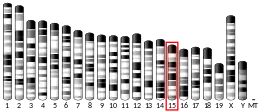Complement component 6
Complement component 6 is a protein that in humans is encoded by the C6 gene.[5]
| C6 | |||||||||||||||||||||||||||||||||||||||||||||||||||
|---|---|---|---|---|---|---|---|---|---|---|---|---|---|---|---|---|---|---|---|---|---|---|---|---|---|---|---|---|---|---|---|---|---|---|---|---|---|---|---|---|---|---|---|---|---|---|---|---|---|---|---|
| |||||||||||||||||||||||||||||||||||||||||||||||||||
| Identifiers | |||||||||||||||||||||||||||||||||||||||||||||||||||
| Aliases | C6, complement C6 | ||||||||||||||||||||||||||||||||||||||||||||||||||
| External IDs | OMIM: 217050 MGI: 88233 HomoloGene: 47 GeneCards: C6 | ||||||||||||||||||||||||||||||||||||||||||||||||||
| |||||||||||||||||||||||||||||||||||||||||||||||||||
| |||||||||||||||||||||||||||||||||||||||||||||||||||
| |||||||||||||||||||||||||||||||||||||||||||||||||||
| |||||||||||||||||||||||||||||||||||||||||||||||||||
| Wikidata | |||||||||||||||||||||||||||||||||||||||||||||||||||
| |||||||||||||||||||||||||||||||||||||||||||||||||||
Complement component 6 is a protein involved in the complement system. It is part of the membrane attack complex which can insert into the cell membrane and cause the cell to lyse.
People with C6 deficiency are prone to bacterial infection.[5]
References
- GRCh38: Ensembl release 89: ENSG00000039537 - Ensembl, May 2017
- GRCm38: Ensembl release 89: ENSMUSG00000022181 - Ensembl, May 2017
- "Human PubMed Reference:". National Center for Biotechnology Information, U.S. National Library of Medicine.
- "Mouse PubMed Reference:". National Center for Biotechnology Information, U.S. National Library of Medicine.
- "Entrez Gene: complement component 6 C6 complement C6 (Homo sapiens (human)) Gene ID: 729". www.ncbi.nlm.nih.gov. 24 November 2020. Retrieved 9 December 2020.
Further reading
- Davila S, Froeling FE, Tan A, et al. (2010). "New genetic associations detected in a host response study to hepatitis B vaccine". Genes Immun. 11 (3): 232–8. doi:10.1038/gene.2010.1. PMID 20237496.
- Rajaraman P, Brenner AV, Butler MA, et al. (2009). "Common variation in genes related to innate immunity and risk of adult glioma". Cancer Epidemiol. Biomarkers Prev. 18 (5): 1651–8. doi:10.1158/1055-9965.EPI-08-1041. PMC 2771723. PMID 19423540.
- Cerhan JR, Novak AJ, Fredericksen ZS, et al. (2009). "Risk of non-Hodgkin lymphoma in association with germline variation in complement genes". Br. J. Haematol. 145 (5): 614–23. doi:10.1111/j.1365-2141.2009.07675.x. PMC 2820509. PMID 19344414.
- Han S, Lan Q, Park AK, et al. (2010). "Polymorphisms in innate immunity genes and risk of childhood leukemia". Hum. Immunol. 71 (7): 727–30. doi:10.1016/j.humimm.2010.04.004. PMC 2967770. PMID 20438785.
- Liu T, Qian WJ, Gritsenko MA, et al. (2005). "Human plasma N-glycoproteome analysis by immunoaffinity subtraction, hydrazide chemistry, and mass spectrometry". J. Proteome Res. 4 (6): 2070–80. doi:10.1021/pr0502065. PMC 1850943. PMID 16335952.
- Kimura K, Wakamatsu A, Suzuki Y, et al. (2006). "Diversification of transcriptional modulation: large-scale identification and characterization of putative alternative promoters of human genes". Genome Res. 16 (1): 55–65. doi:10.1101/gr.4039406. PMC 1356129. PMID 16344560.
- Talmud PJ, Drenos F, Shah S, et al. (2009). "Gene-centric association signals for lipids and apolipoproteins identified via the HumanCVD BeadChip". Am. J. Hum. Genet. 85 (5): 628–42. doi:10.1016/j.ajhg.2009.10.014. PMC 2775832. PMID 19913121.
- Müller-Eberhard HJ (1988). "Molecular organization and function of the complement system". Annu. Rev. Biochem. 57: 321–47. doi:10.1146/annurev.bi.57.070188.001541. PMID 3052276.
- Gerhard DS, Wagner L, Feingold EA, et al. (2004). "The status, quality, and expansion of the NIH full-length cDNA project: the Mammalian Gene Collection (MGC)". Genome Res. 14 (10B): 2121–7. doi:10.1101/gr.2596504. PMC 528928. PMID 15489334.
- Eid NA, Hussein AA, Elzein AM, et al. (2010). "Candidate malaria susceptibility/protective SNPs in hospital and population-based studies: the effect of sub-structuring". Malar. J. 9: 119. doi:10.1186/1475-2875-9-119. PMC 2877684. PMID 20459687.
- Fosbrink M, Cudrici C, Tegla CA, et al. (2009). "Response gene to complement 32 is required for C5b-9 induced cell cycle activation in endothelial cells". Exp. Mol. Pathol. 86 (2): 87–94. doi:10.1016/j.yexmp.2008.12.005. PMC 2699899. PMID 19162005.
- Rajaraman P, Brenner AV, Neta G, et al. (2010). "Risk of meningioma and common variation in genes related to innate immunity". Cancer Epidemiol. Biomarkers Prev. 19 (5): 1356–61. doi:10.1158/1055-9965.EPI-09-1151. PMC 3169167. PMID 20406964.
- Ennis S, Jomary C, Mullins R, et al. (2008). "Association between the SERPING1 gene and age-related macular degeneration: a two-stage case-control study". Lancet. 372 (9652): 1828–34. doi:10.1016/S0140-6736(08)61348-3. PMC 5983350. PMID 18842294.
- Soejima M, Tachida H, Tsuneoka M, et al. (2005). "Nucleotide sequence analyses of human complement 6 (C6) gene suggest balancing selection". Ann. Hum. Genet. 69 (Pt 3): 239–52. doi:10.1046/j.1529-8817.2005.00165.x. PMID 15845028.
- Bulla R, Bossi F, Agostinis C, et al. (2009). "Complement production by trophoblast cells at the feto-maternal interface". J. Reprod. Immunol. 82 (2): 119–25. doi:10.1016/j.jri.2009.06.124. PMID 19665237.
- Gancz D, Donin N, Fishelson Z (2009). "Involvement of the c-jun N-terminal kinases JNK1 and JNK2 in complement-mediated cell death". Mol. Immunol. 47 (2–3): 310–7. doi:10.1016/j.molimm.2009.09.016. PMID 19864026.
- Parham KL, Roberts A, Thomas A, et al. (2007). "Prevalence of mutations leading to complete C6 deficiency (C6Q0) in the Western Cape, South Africa and detection of novel mutations leading to C6Q0 in an Irish family". Mol. Immunol. 44 (10): 2756–60. doi:10.1016/j.molimm.2006.11.022. PMID 17257682.
- Wu C, Ma MH, Brown KR, et al. (2007). "Systematic identification of SH3 domain-mediated human protein-protein interactions by peptide array target screening". Proteomics. 7 (11): 1775–85. doi:10.1002/pmic.200601006. PMID 17474147. S2CID 22474278.
- Bailey SD, Xie C, Do R, et al. (2010). "Variation at the NFATC2 locus increases the risk of thiazolidinedione-induced edema in the Diabetes REduction Assessment with ramipril and rosiglitazone Medication (DREAM) study". Diabetes Care. 33 (10): 2250–3. doi:10.2337/dc10-0452. PMC 2945168. PMID 20628086.
External links
- Complement+C6 at the U.S. National Library of Medicine Medical Subject Headings (MeSH)
This article is issued from Wikipedia. The text is licensed under Creative Commons - Attribution - Sharealike. Additional terms may apply for the media files.



